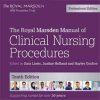Acid-Base Disorders in the Critically III Patient
cjasn.asnjournals.orgAcid-base disorders are common in the intensive care unit. By utilizing a systematic approach to their diagnosis, it is easy to identify both simple and mixed disturbances. These disorders are divided into four major categories: metabolic acidosis, metabolic alkalosis, respiratory acidosis, and respiratory alkalosis.
Metabolic acidosis is subdivided into anion gap and non–gap acidosis. Distinguishing between these is helpful in establishing the cause of the acidosis.
Anion gap acidosis, caused by the accumulation of organic anions from sepsis, diabetes, alcohol use, and numerous drugs and toxins, is usually present on admission to the intensive care unit.
Lactic acidosis from decreased delivery or utilization of oxygen is associated with increased mortality.
This is likely secondary to the disease process, as opposed to the degree of acidemia.
Treatment of an anion gap acidosis is aimed at the underlying disease or removal of the toxin. The use of therapy to normalize the pH is controversial.
Non–gap acidoses result from disorders of renal tubular H+ transport, decreased renal ammonia secretion, gastrointestinal and kidney losses of bicarbonate, dilution of serum bicarbonate from excessive intravenous fluid administration, or addition of hydrochloric acid.

















